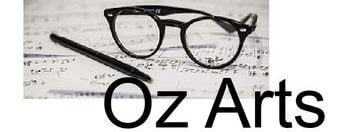Boris Godunov – Symphonic Synthesis;
Entr’acte to Khovanshchina (Act IV):
Mussorgsky transcribed Stokowski
The Cleveland Orchestra
Oliver Knussen (conductor)
DG 475 646-2
TPT: 1:05:31
reviewed by Neville Cohn
For much of his career, Leopold Stokowski was second in fame only to Arturo Toscanini. Born plain Leo Stokes in England, a name change, an infallible gift for self-promotion and a genuine musical gift ensured that Stokowski was seldom out of the public eye.
While his flamboyant arrangements for large orchestra of numbers of Bach’s organ works often teetered on the brink of vulgarity, many of his other orchestrations are most effective. And one of the best of these is his re-working of Mussorgsky’s Pictures at an Exhibition.
For years, Ravel’s version has been the orchestration of choice in concert programs worldwide. Its justified popularity, though, has largely overshadowed Stokowski’s version. More’s the pity because Stokowski’s orchestration makes for utterly compelling listening. By any stretch of the imagination, this re-writing of Mussorgsky’s masterpiece for the piano is a tour de force. I listened with astonishment to Oliver Knussen’s direction of the Cleveland Orchestra.
Where has this superb instrumentation been since Stokowski placed it on paper in 1939? It is far too fine to fall again into oblivion. Hats off to Knussen for unearthing the score and placing it on disc. He is very much the man for the job, giving point and meaning to every nuance of Stokowski’s often dazzling re-working. Don’t listen to it late at night, though. A combination of a first rate transcription, Knussen’s baton wizardry and an often incandescent orchestra in top form are bound to fire the imagination and put paid to a night’s tranquil sleep.
Listen to it in the morning instead. It’s as vitalising as a bottle of Vitamin B tablets.
I was particularly struck by Stokowski’s orchestration of the opening Promenade and its numerous other appearances as the work unfolds. Initially, it has a stately, expansive quality; on its returns it comes across variously as a dignified amble (expressed in such hushed terms as to border on the inaudible) or played so slowly as to teeter on the edge of inertia. It’s a very different experience to that of Ravel’s transcription – and for those encountering Stokowski’s version for the first time, it may well make for startling listening.
Knussen takes his forces through Bydlo, for instance, at a pace far brisker than usually encountered; as an impression of a lumbering ox cart, it doesn’t really convince. But this is the only reservation in an otherwise utterly absorbing, magnificently coloured alternative view of one the most well-loved masterworks in the canon.
Those exposed to – and offended by – the crassness of some of Stokowski’s re-workings of Bach organ works may need some encouraging to listen to his versions of some of Mussorgsky’s works.
Take the plunge; it will almost certainly be a rewarding experience, not least an account of Night on Bare Mountain where conductor and orchestra seem positively to relish coming to grips with Stokowski’s quite inspired instrumentation; whining strings and the sheer intensity of a presentation that borders on the satanic, inflame the imagination.
The same level of brilliance is apparent in Stokowski’s so-called Symphonic Synthesis of extracts from Boris Godunov with the barbaric splendour of some of Mussorgsky’s themes providing listening that rivets the ear. Much the same can be said of the brief entr’acte to Khovanshchina (Act IV).
Throughout, Knussen is a passionate advocate for both Mussorgsky and Stokowski to whose originality and brilliance he pays unfailingly articulate homage.
Copyright Neville Cohn 2004
